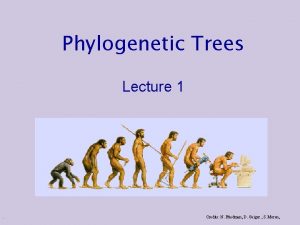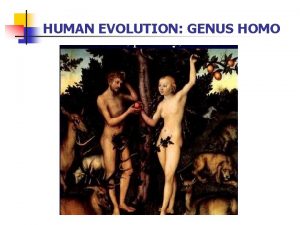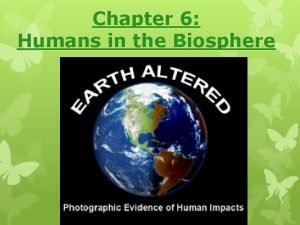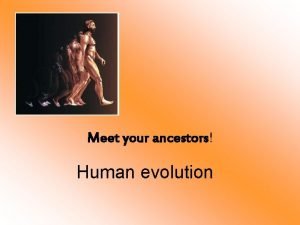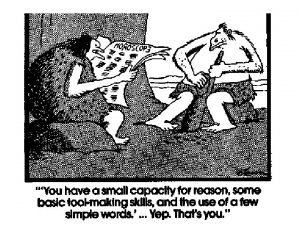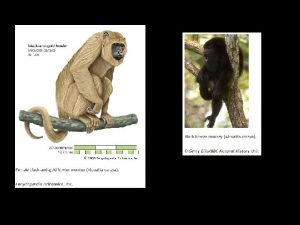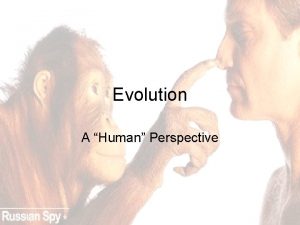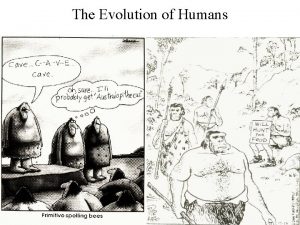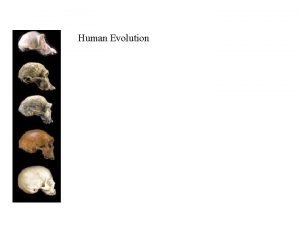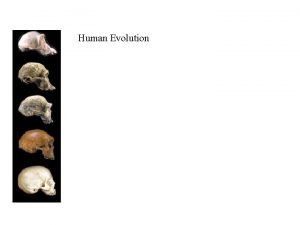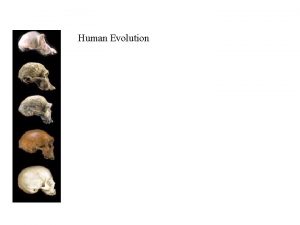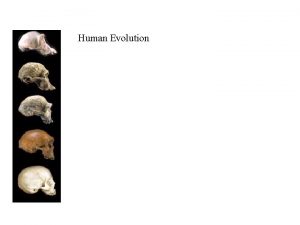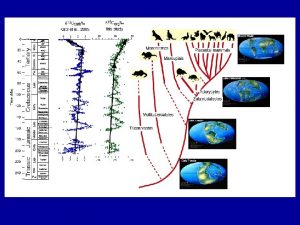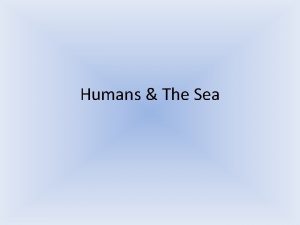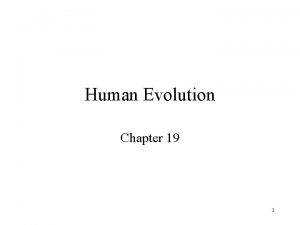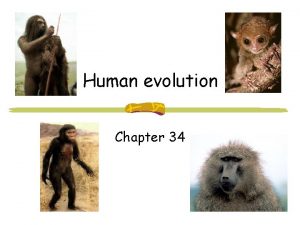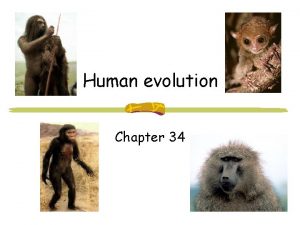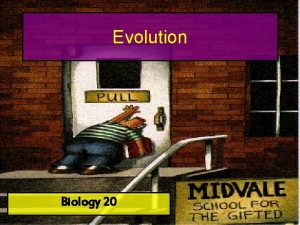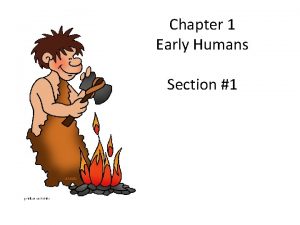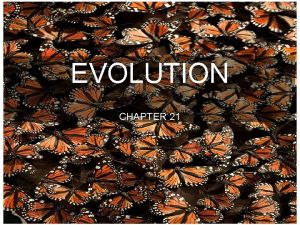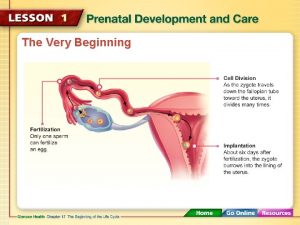Chapter 20 Human Evolution Humans are all very
























- Slides: 24

Chapter 20 Human Evolution

Humans are all very similar • Homo sapiens: biological species of humans • All 99. 9% identical – How many nucleotide differences is that? • Human genome is ~3 billion base pairs in length

Why did human populations evolve varying skin tones? • Skin tone reflects levels of melanin – pigments produced by a type of skin cell – Absorbs UV light – Come mainly in two forms, eumelanin (black-brown) and phaeomelanin (yellow to reddish-brown)


• Is there an evolutionary advantage to light or dark skin?

Advantage of dark skin? • Dark skin protects Folate (B vitamin) circulating in the blood – Low folate can cause severe birth defects

Advantage of light skin? • Vitamin D production requires UV light – Dark skin prevents vitamin D production in low light



Selection for skin color

Humans evolved in Africa • Mitochondrial DNA (mt. DNA) confirms common ancestry – DNA in mitochondria is inherited solely from mothers


Out of Africa hypothesis

Common ancestor of all humans alive today HUMANS Africa North Africa Mostancestral lineages from Africa; highest genetic diversity Europe, Russia Central Asia, South Asia Northeast, East, and Southeast Asia (Siberia, Mongolia, China, Japan, Cambodia, et al. ) Native North America Native South America Most-recent lineages; lowest genetic diversity New Guinea, Pacific Islands

Selection for skin color

Becoming human • Primate characteristics – Forward facing eyes – Grasping feet – Flattened nails – Large brains – Social behavior – Extensive parental care of young

• Primates have two lineages – Prosimians (“before-monkeys”) – Anthropoids ("human-like") • Split into the new and old world monkeys and the Hominids (great apes) • Humans are the only bipedal primates Prosimians Anthropoidea Hominidae (Great apes) Rodents, New World rabbits Prosimians monkeys Old World monkeys Gibbons Orangutan Western gorilla Eastern gorilla Common Bonobo chimpanzee Human Bipedalism Knuckle-walking Fist-walking Long arms, short legs, no tail Opposable thumb Ancestral primate had good depth perception, efficient grasping, and complex social behavior

Hominid • Any member of the biological family Hominidae • Includes living and extinct great apes – humans, orangutans, gorillas, chimpanzees, and bonobos

• Hominids – great apes and humans

• Hominins - humans and their extinct bipedal ancestors

• Human traits – bipedalism – loss of body hair – development of sweat glands – levels of melanin

• How are humans classified? – Domain – Kingdom – Phylum – Class – Order – Family – Genus – species

• Vestigial traits – Reduced structure that resembles functioning structures in related species The human tailbone is a vestigial trait. Capuchin monkey tail (used for balance, locomotion) Human coccyx Goose bumps are a vestigial trait. Erect hair on chimp (insulation, emotional display) Human goose bumps

Summary • Humans are 99. 9% genetically identical to one another regardless of geographic origin. • All humans are members of a single biological species, Homo sapiens. • Skin color most likely evolved in response to environmental UV levels, an example of evolution by natural selection. • Fossil evidence shows that humans and apes descended from a common ancestor and that walking upright preceded development of a big brain. • Fossil and DNA evidence shows that anatomically modern humans first emerged in Africa, approximately 200, 000 years ago.
 Insidan region jh
Insidan region jh Evolution of humans
Evolution of humans Human phylogenetic tree
Human phylogenetic tree Evolution of humans timeline
Evolution of humans timeline Figure 10
Figure 10 Used to express very large or very small numbers
Used to express very large or very small numbers There is very few soup in the bowl
There is very few soup in the bowl Receiving table/area
Receiving table/area A little food or a few food
A little food or a few food All humans are same
All humans are same All humans are same
All humans are same Name all the lines name all the segments name all the rays
Name all the lines name all the segments name all the rays Chapter 34 circulation in humans concept mapping answer key
Chapter 34 circulation in humans concept mapping answer key Chapter 34 circulation in humans concept mapping answer key
Chapter 34 circulation in humans concept mapping answer key Chapter 6 humans in the biosphere
Chapter 6 humans in the biosphere Early humans and the agricultural revolution
Early humans and the agricultural revolution Chapter 1 section 1
Chapter 1 section 1 Chapter 6 humans in the biosphere
Chapter 6 humans in the biosphere Draino chemical name
Draino chemical name Human needs and human development chapter 8
Human needs and human development chapter 8 Chapter 8 human needs and human development
Chapter 8 human needs and human development Human evolution
Human evolution Dryopithecus human evolution
Dryopithecus human evolution Australopithecus vs paranthropus
Australopithecus vs paranthropus Hominid evolution
Hominid evolution


